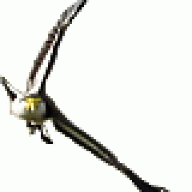Thanks all for the great discussion! It'd probably be better to start a new thread (sorry Darky), but I'm the king of off-topic so...
So far my understanding is that lift is all about Newton (as you are all saying)...in level flight your wings are throwing down (deflecting) a mass of air equal to the weight of your aircraft. The Angle of Attack of your wing is how you adjust how much air is deflected, and your elevators are used to control that AoA. Bernoulli and Coanda et al probably have some bearing on the process but the end result is the same.
Before you worry about which girl and boy molecules are chasing each other, I think you have to remember that some aircraft have symmetrical airfoils (equal curve top and bottom). So the whole idea of air above and below the wing travelling at different speeds doesn't really apply, but they still fly.
However, Nev (the wise) brings up a good point about too much knowledge. I don't fly but I already have fairly firm ideas on how an aeroplane flies. For instance, in my mind a given AoA (or a given trim) equals a certain airspeed and playing with a flight sim seems to back this up. Add more power and you get more lift and climb while maintaining airspeed, decrease power and you descend and maintain airspeed. From what I read some instructors teach the opposite (power=airspeed, attitude=climb/fall).
So, when I (eventually) go looking for an instructor, is it best to find one that thinks like I do, or do I forget what I know and just learn to fly?
Peter



